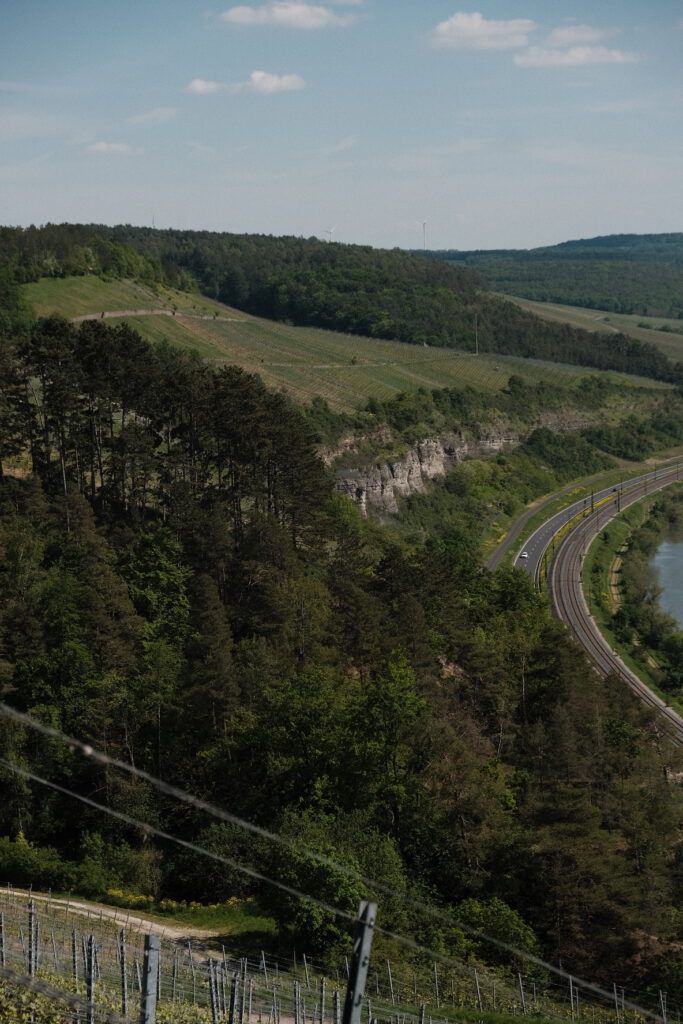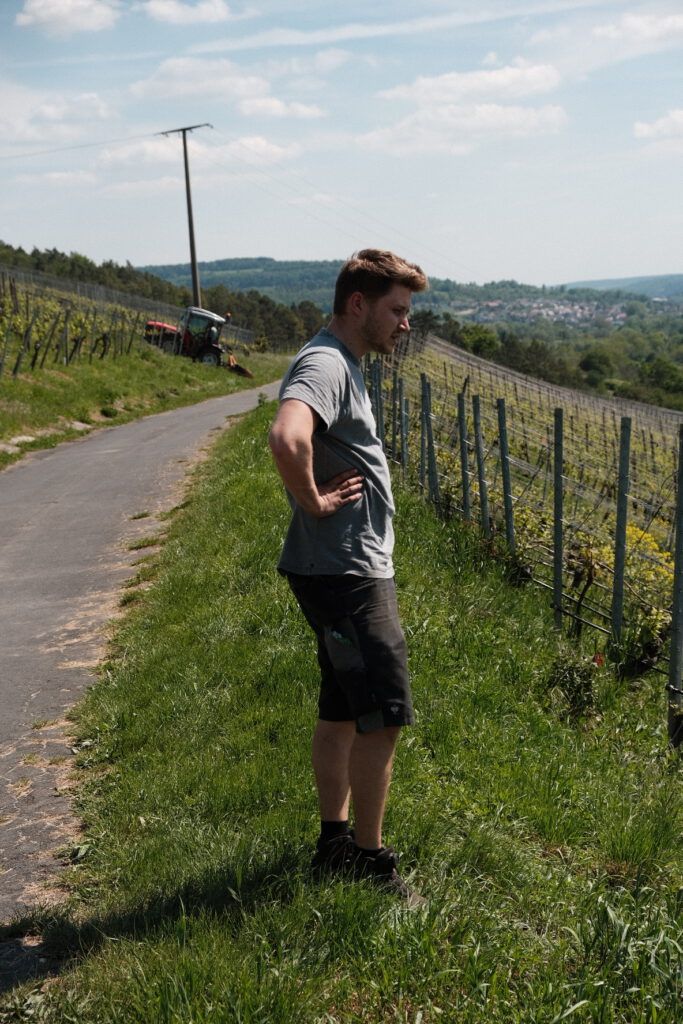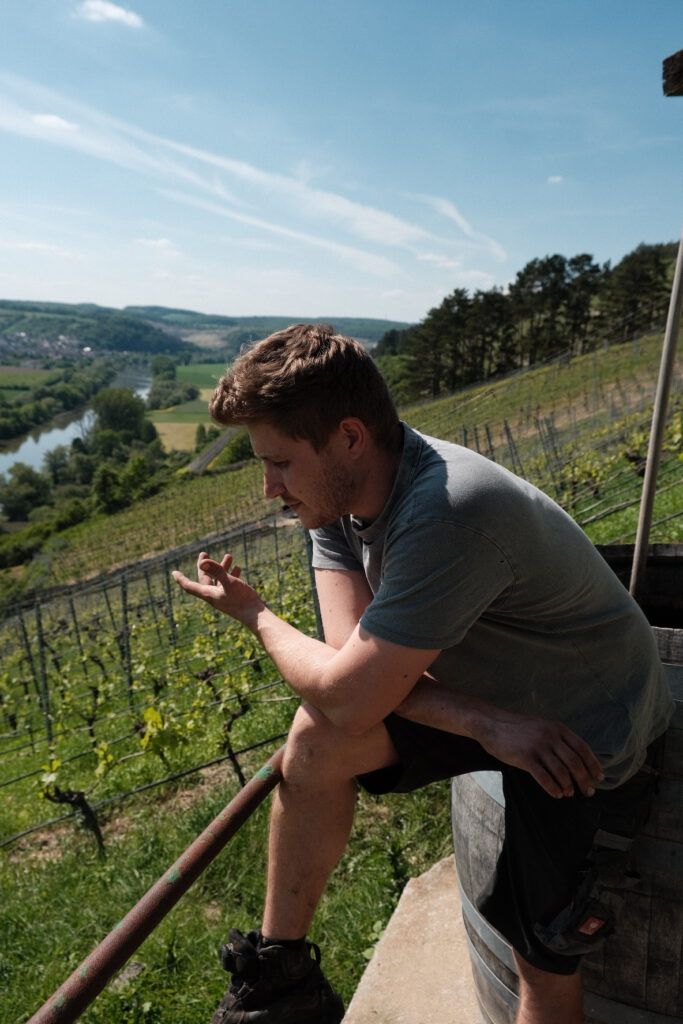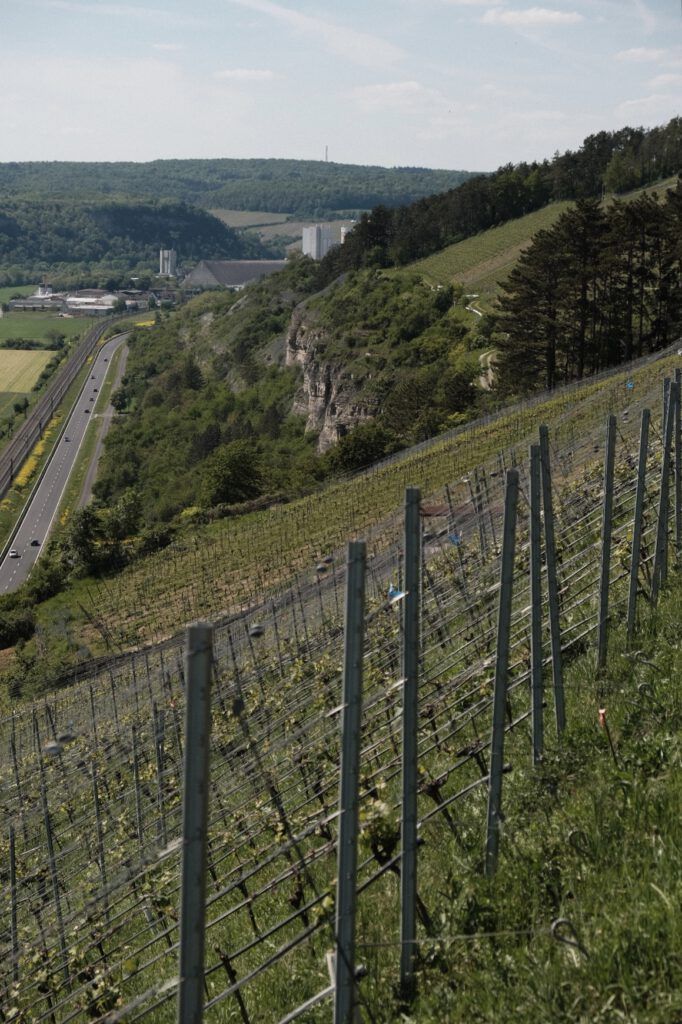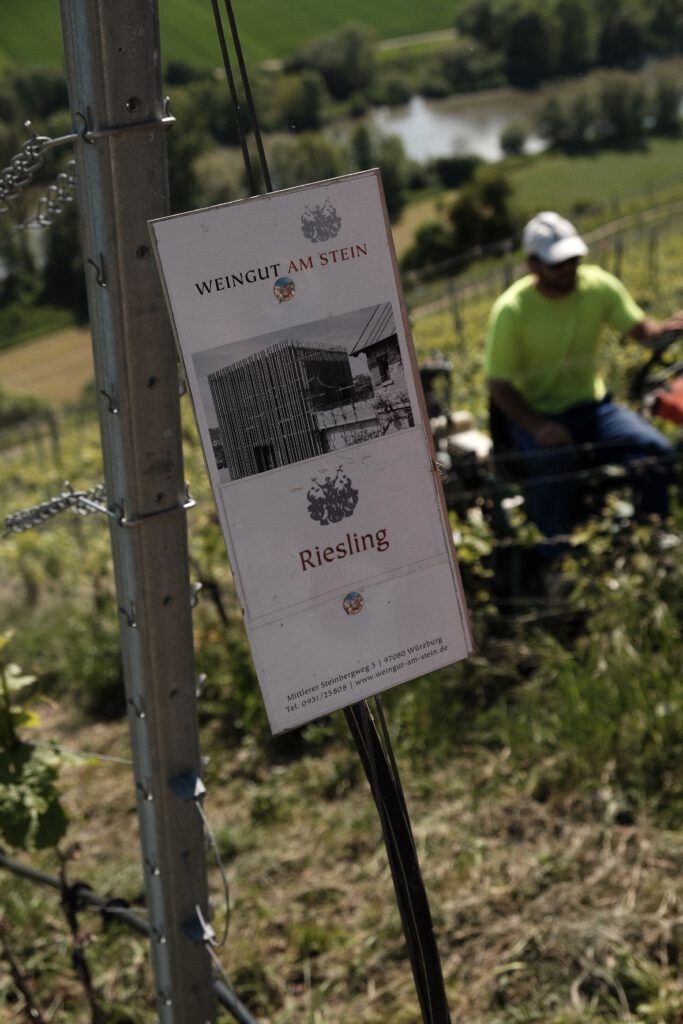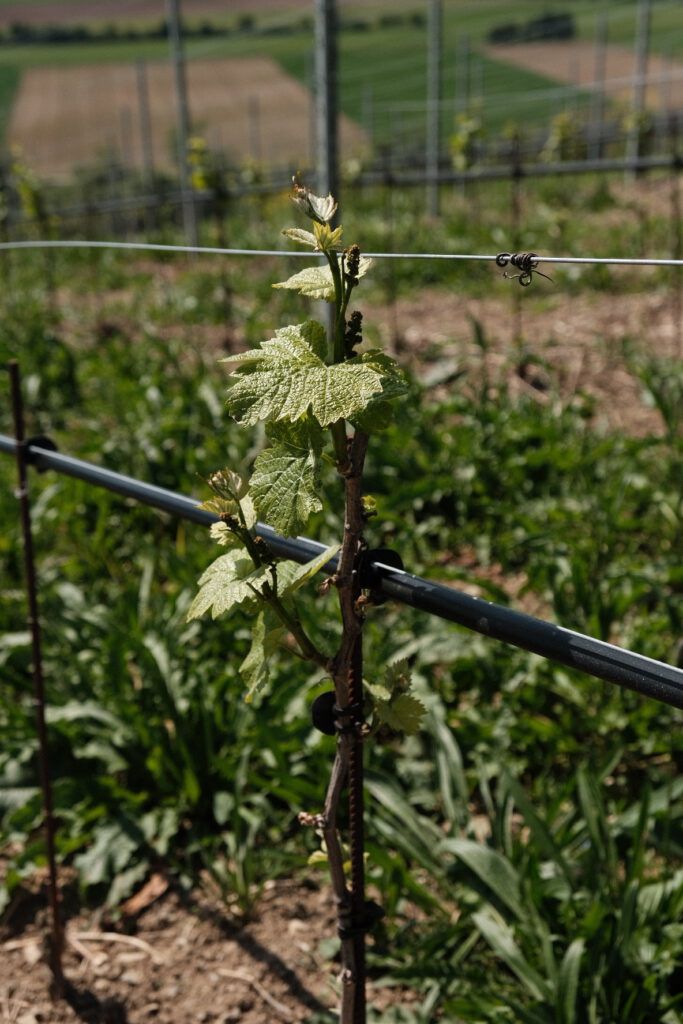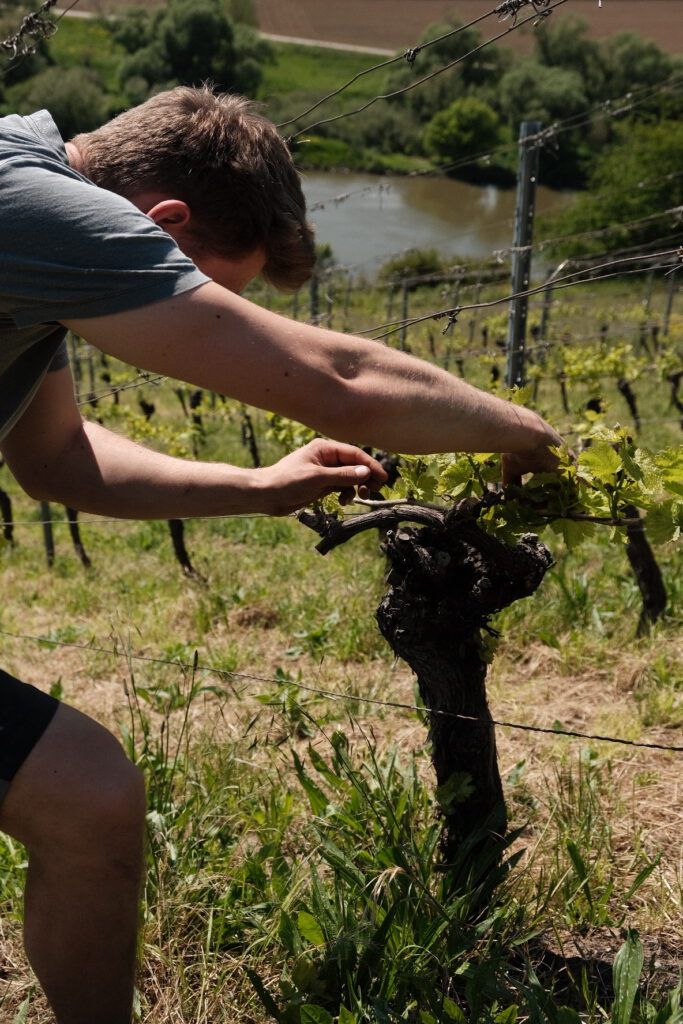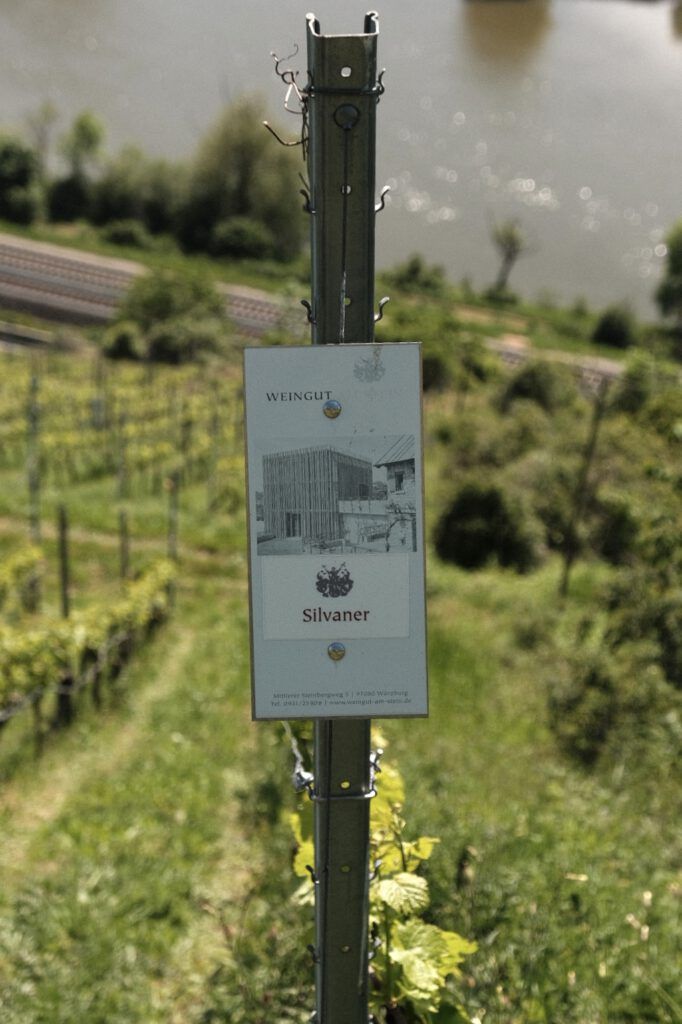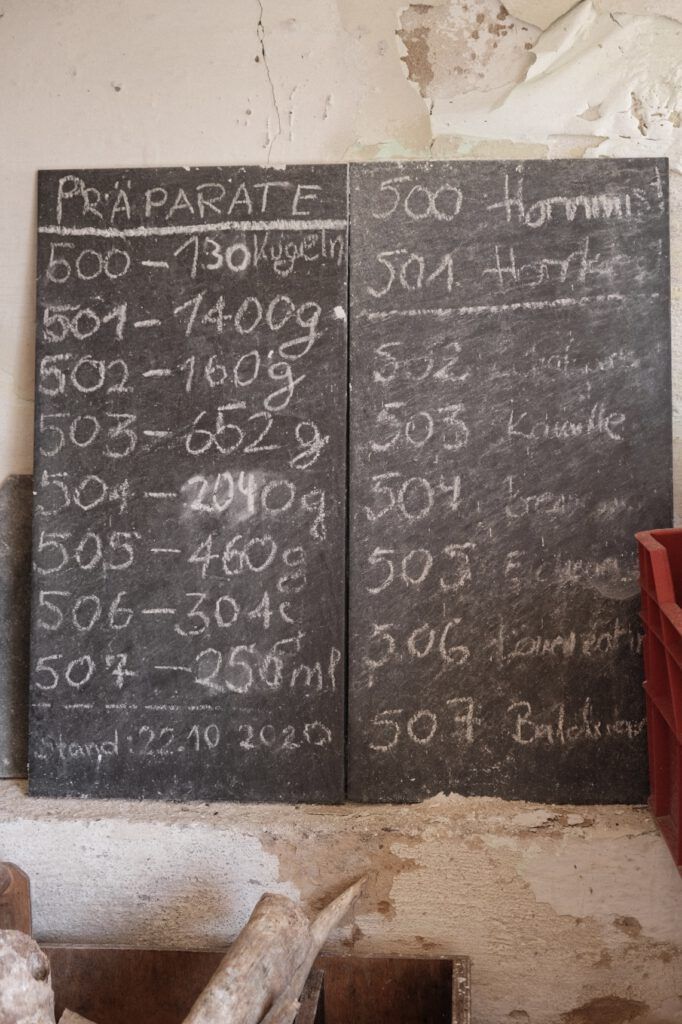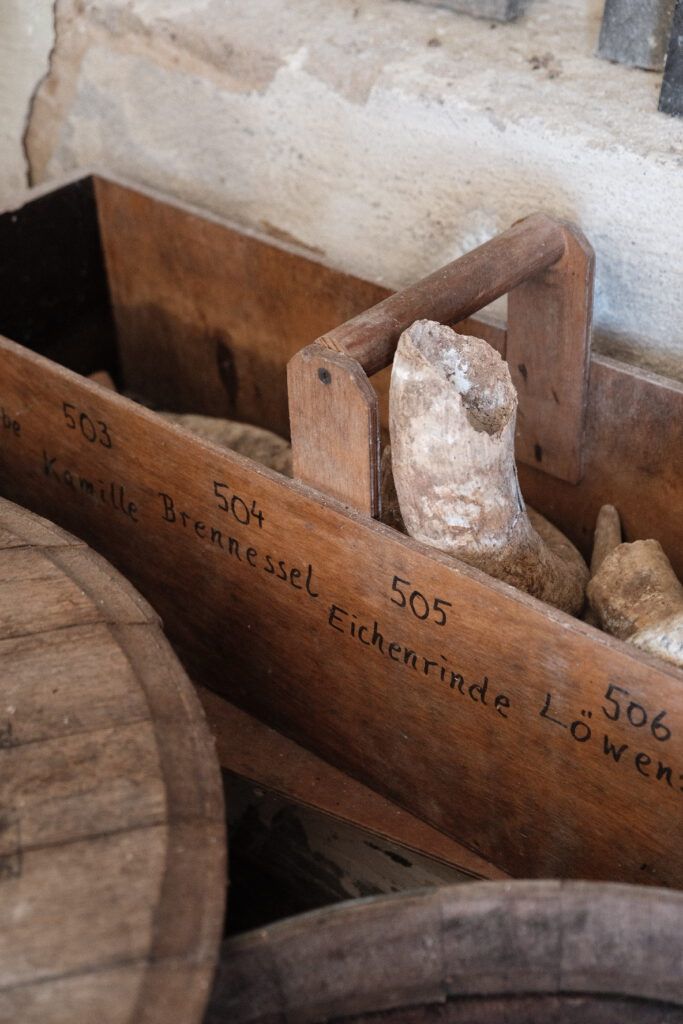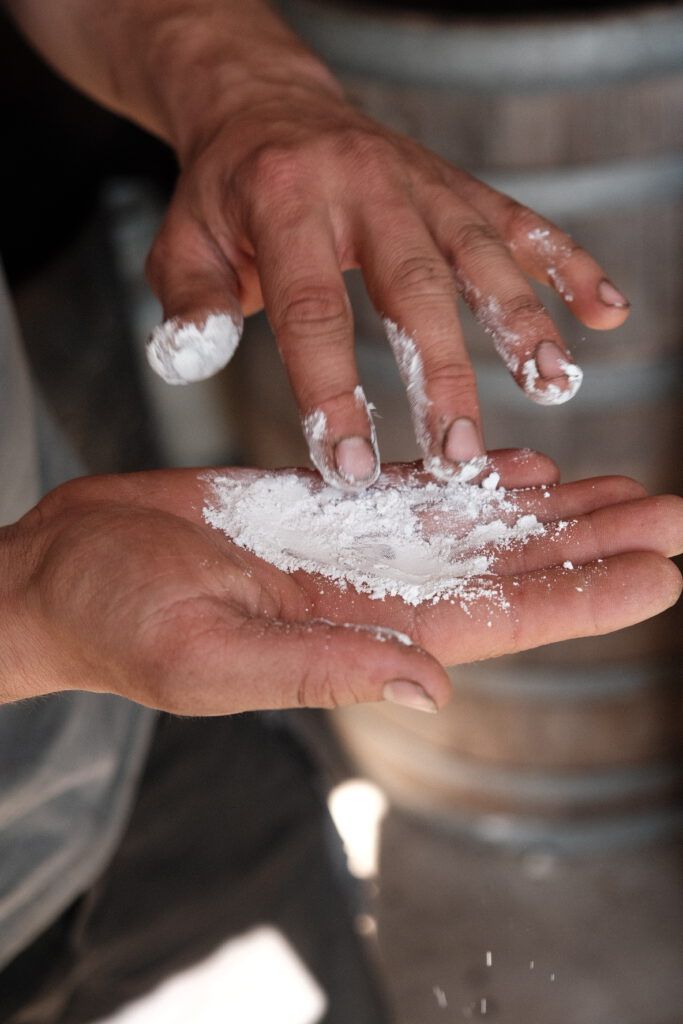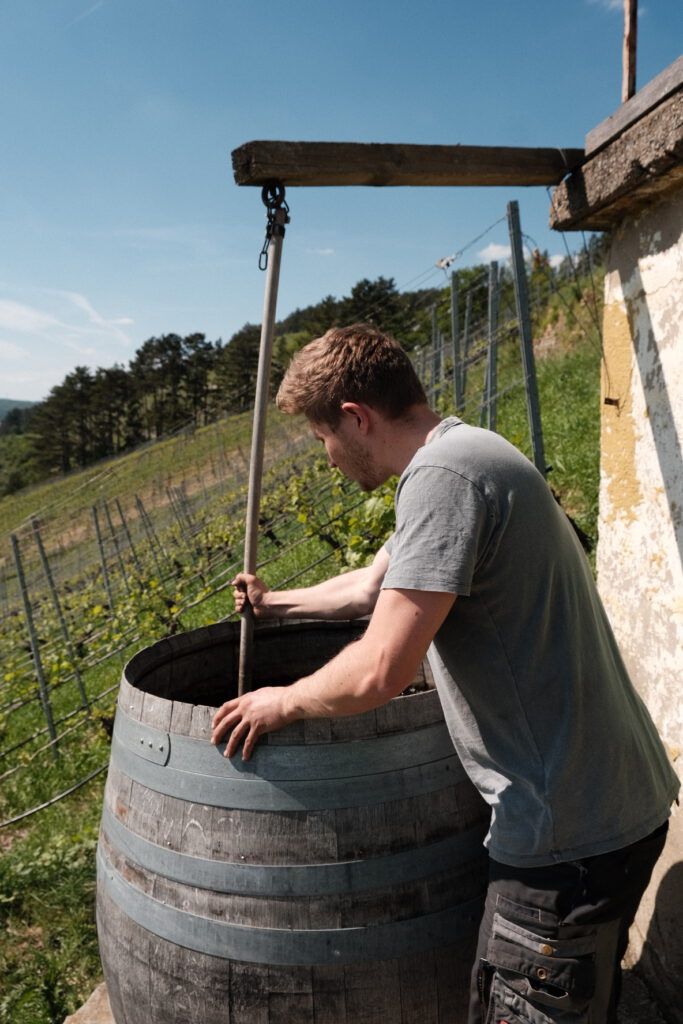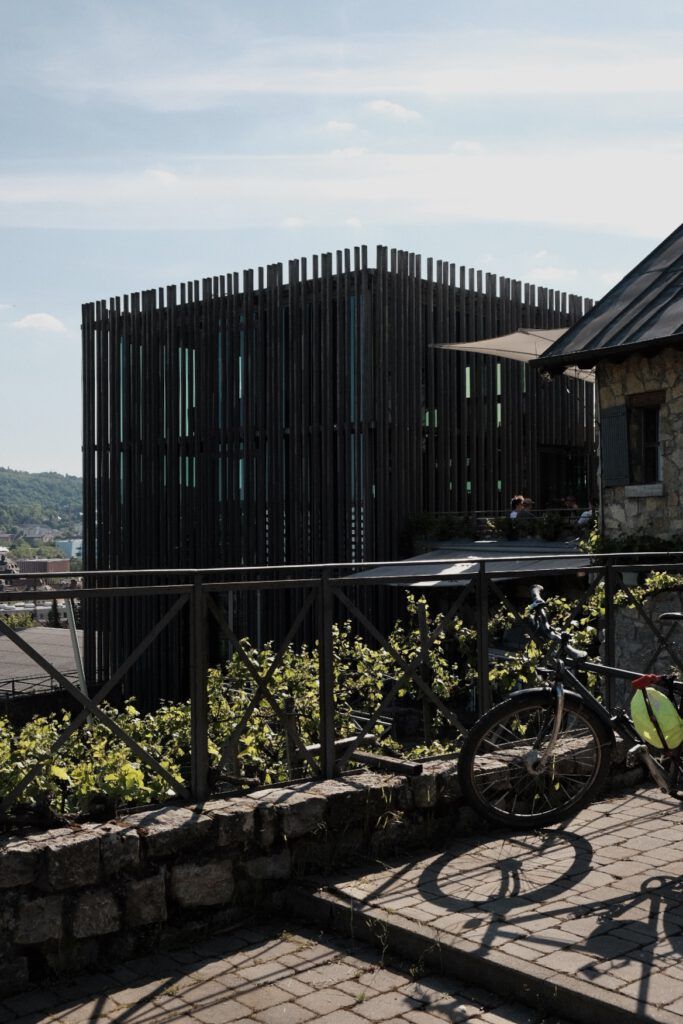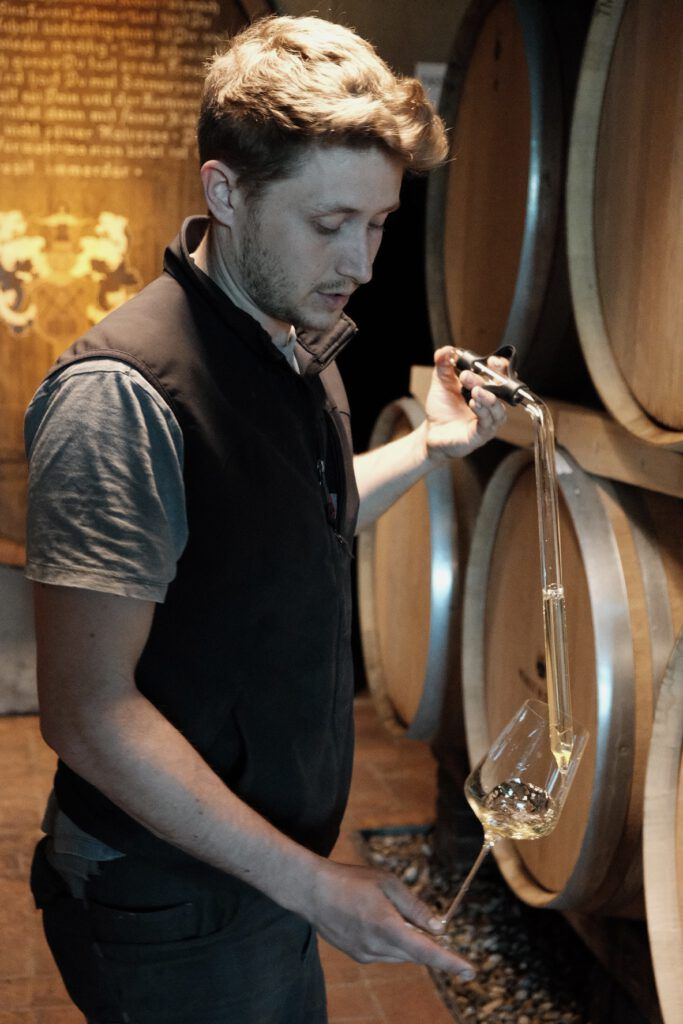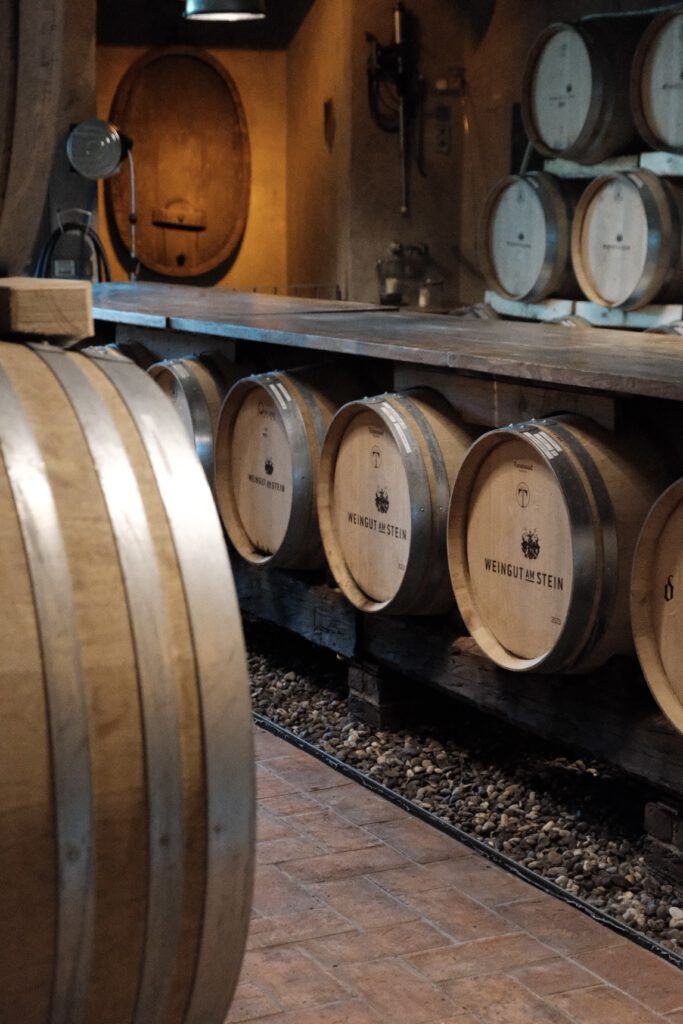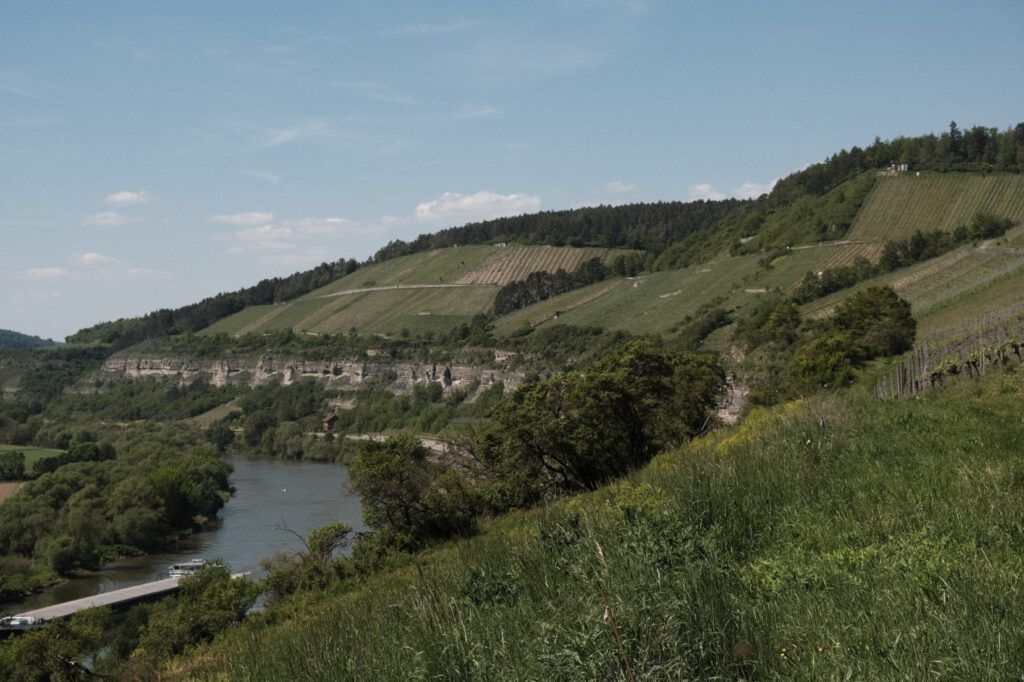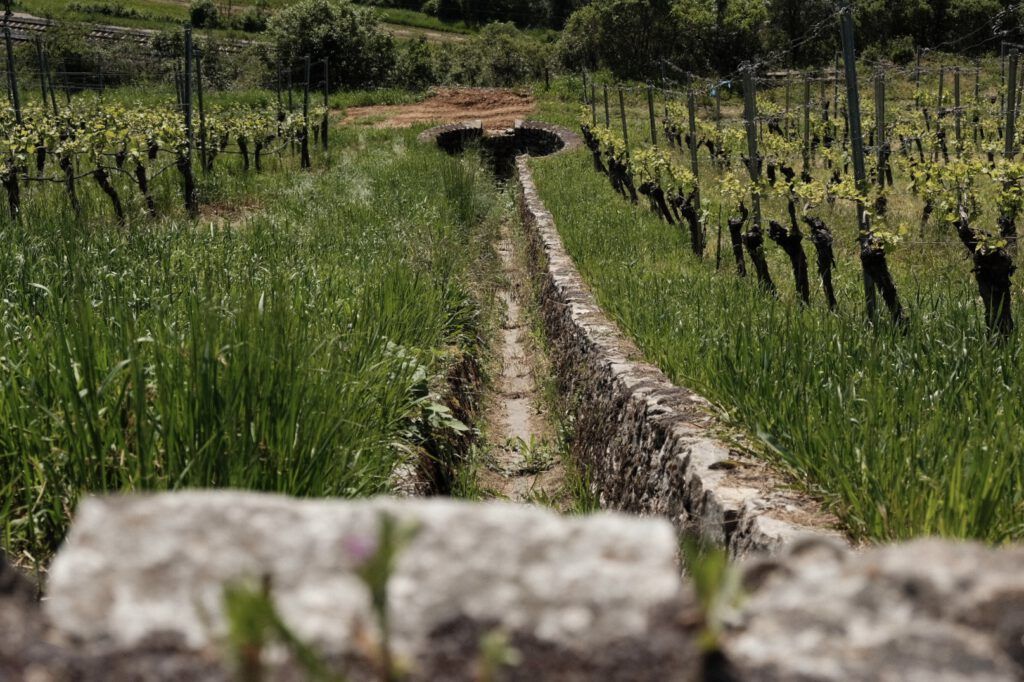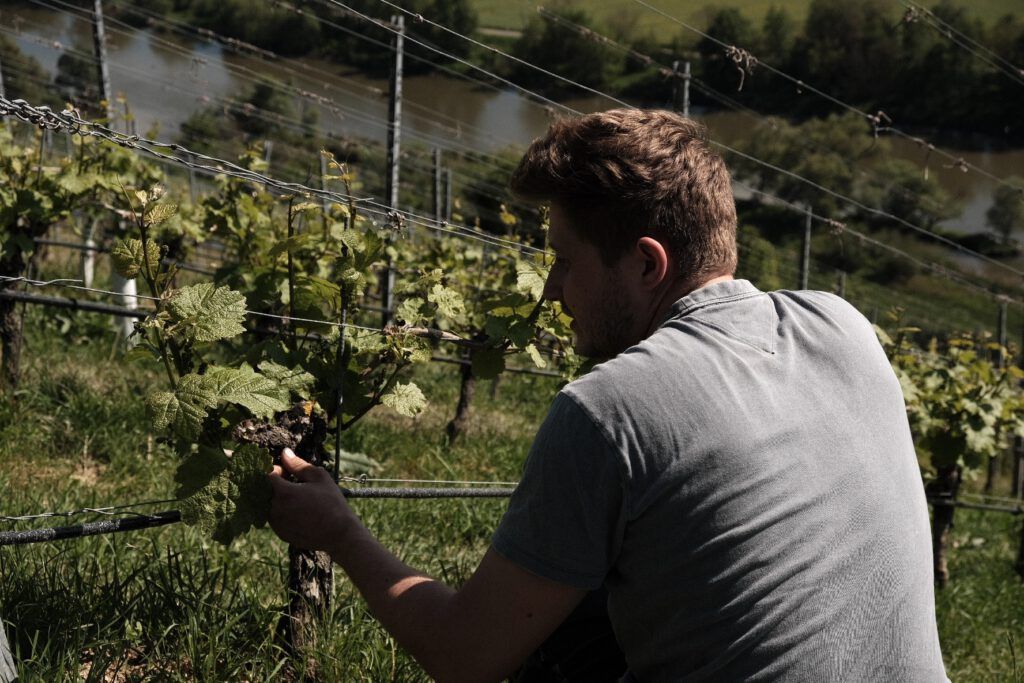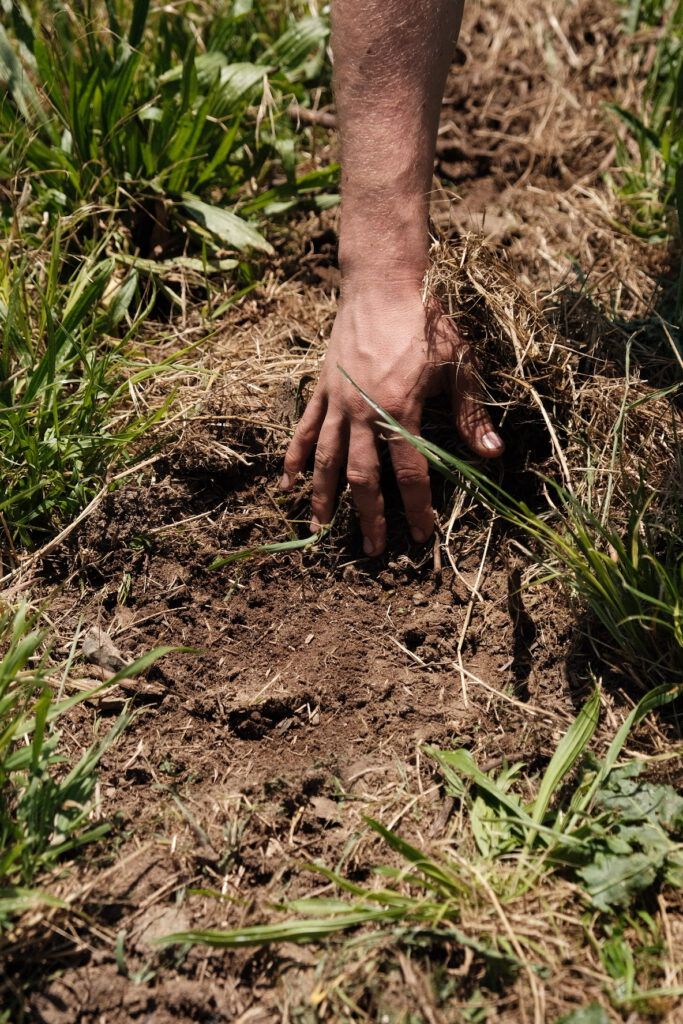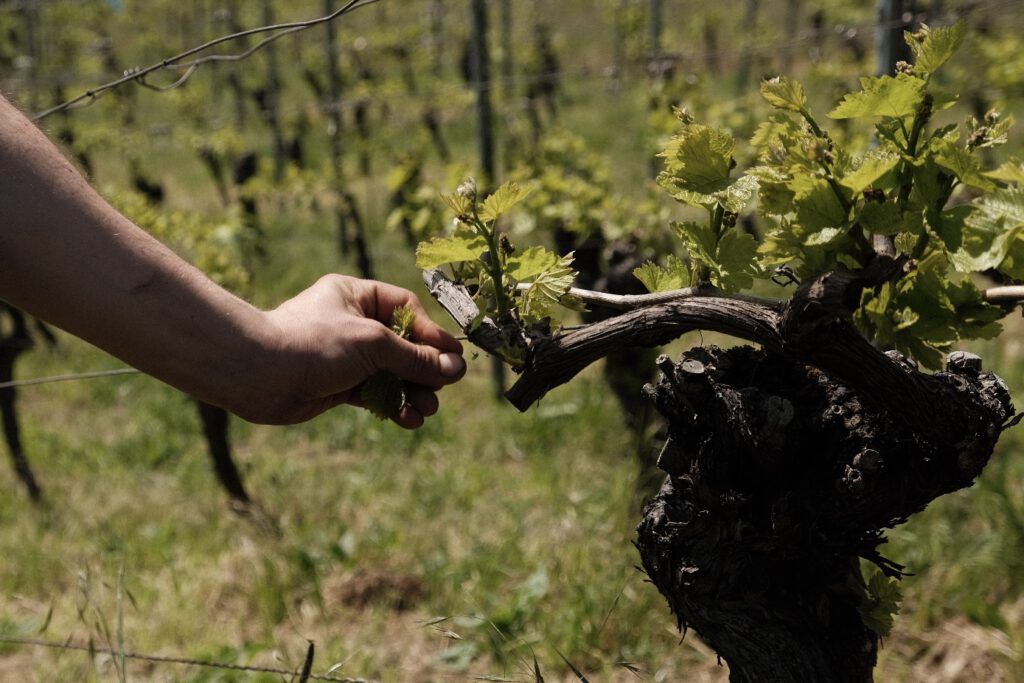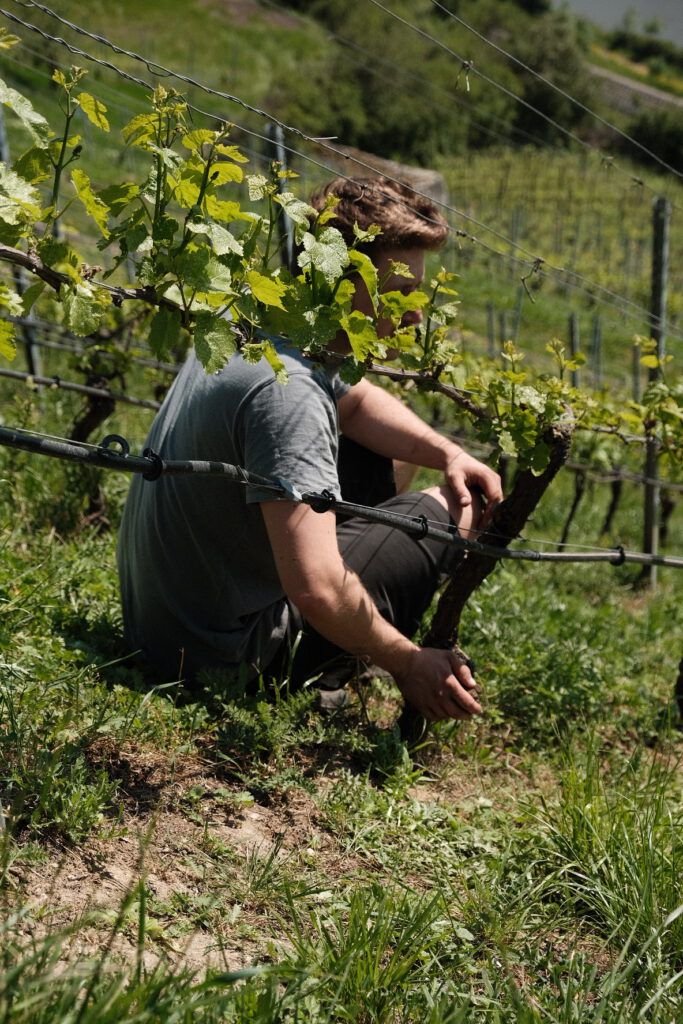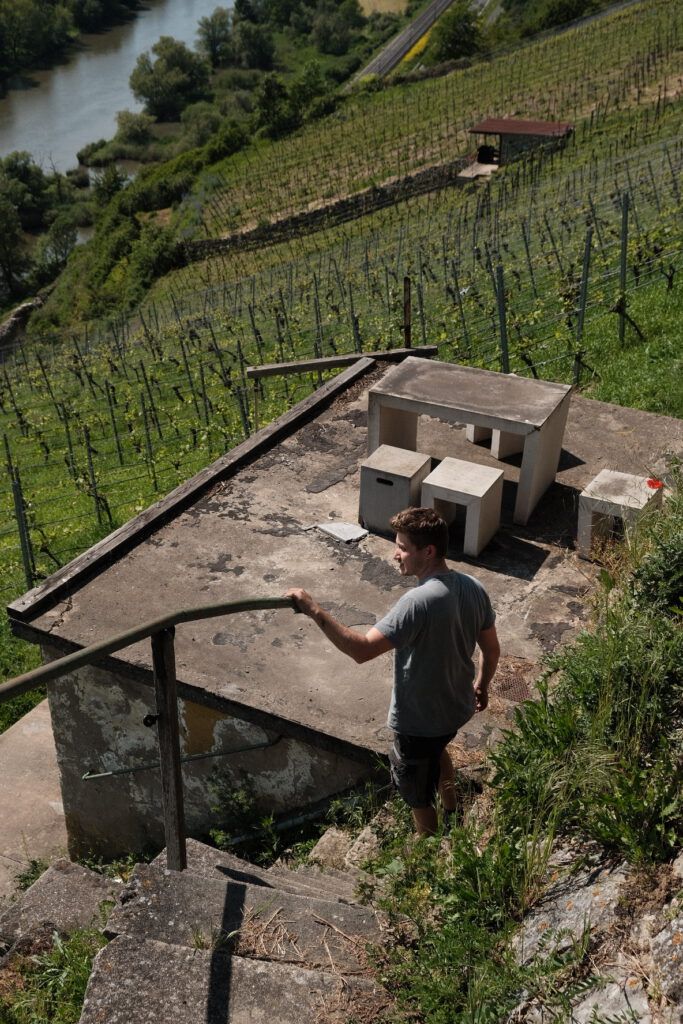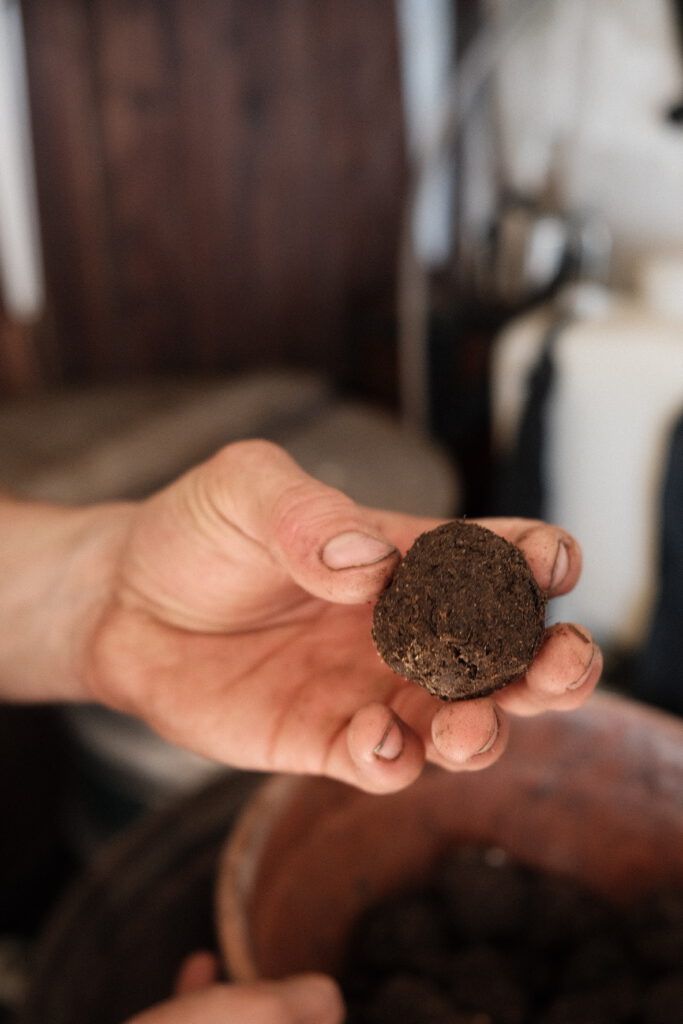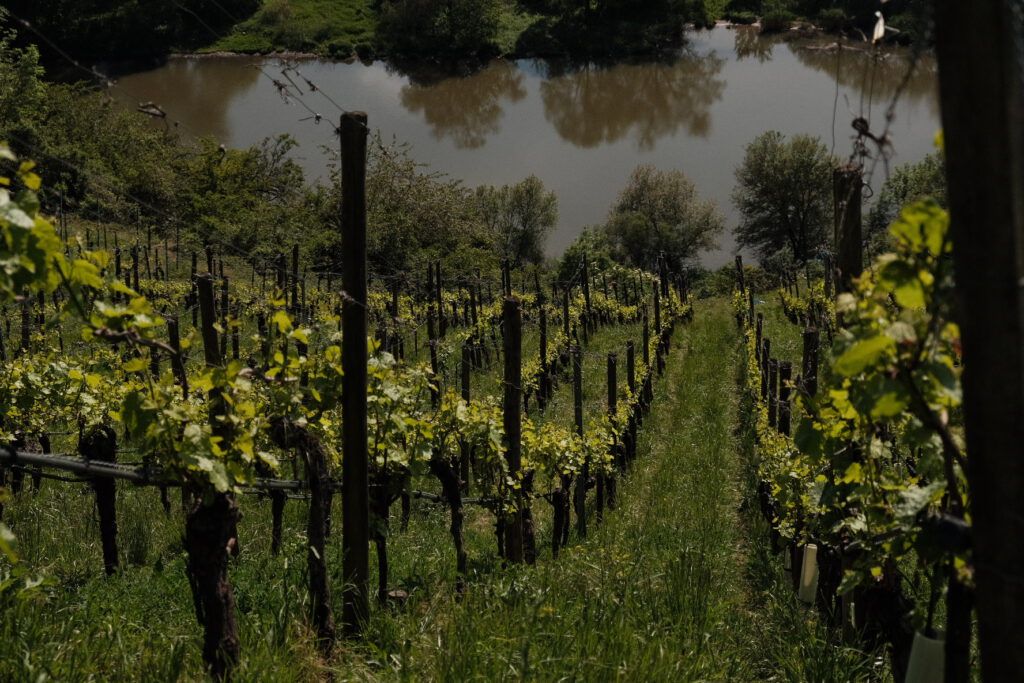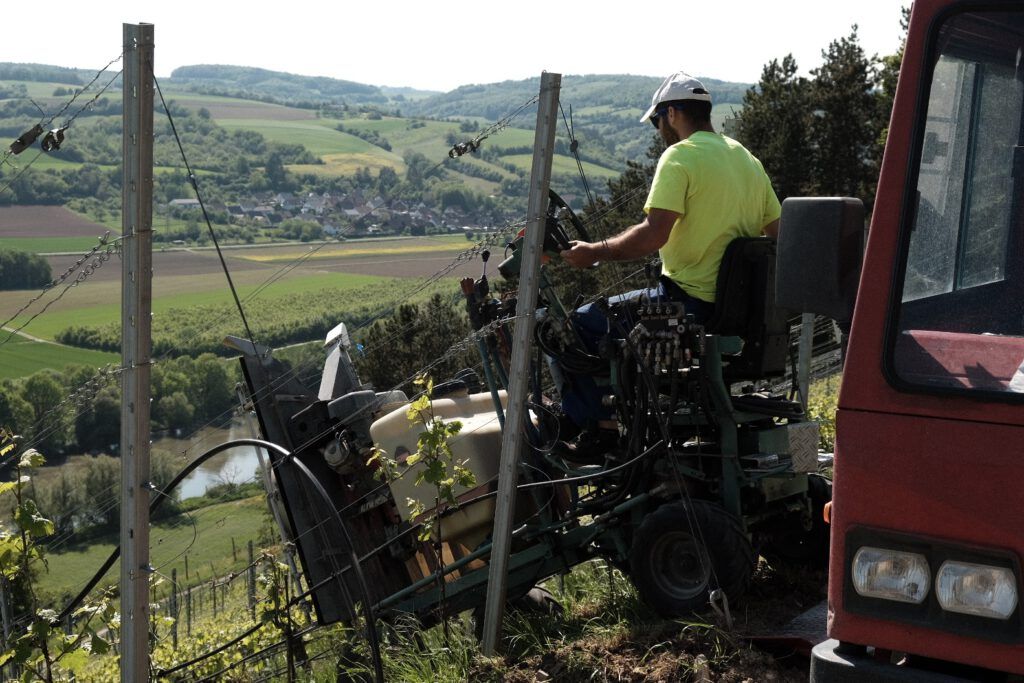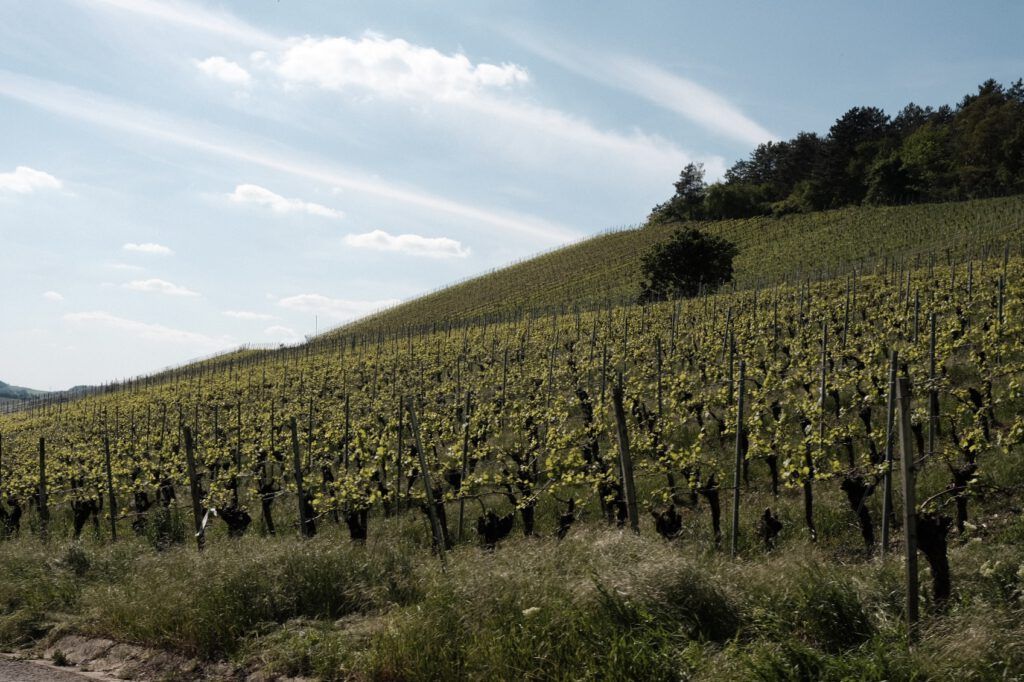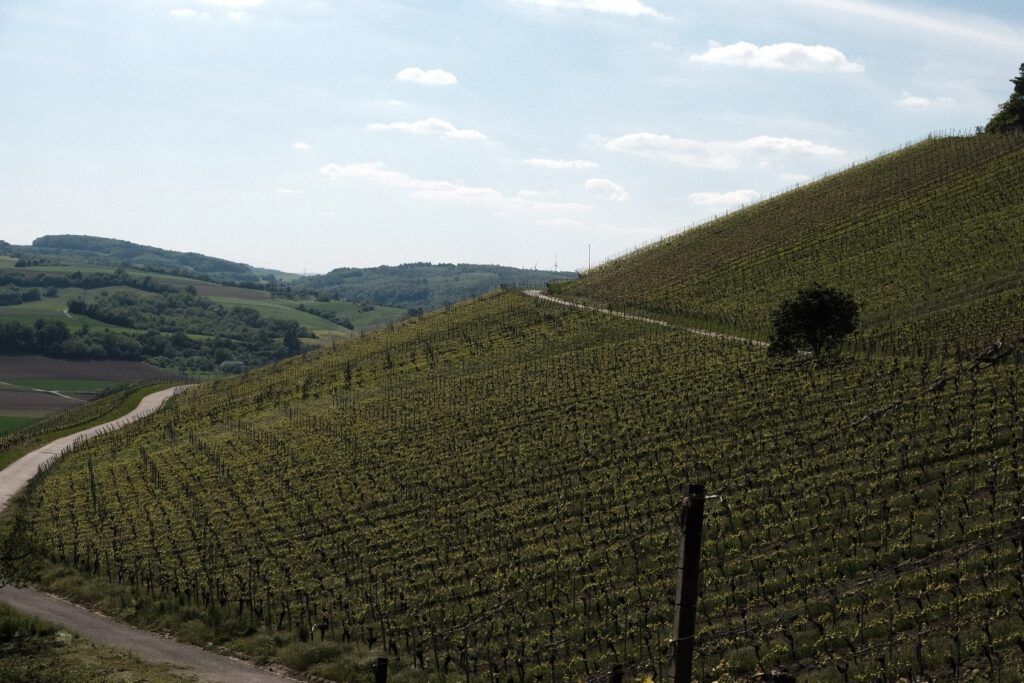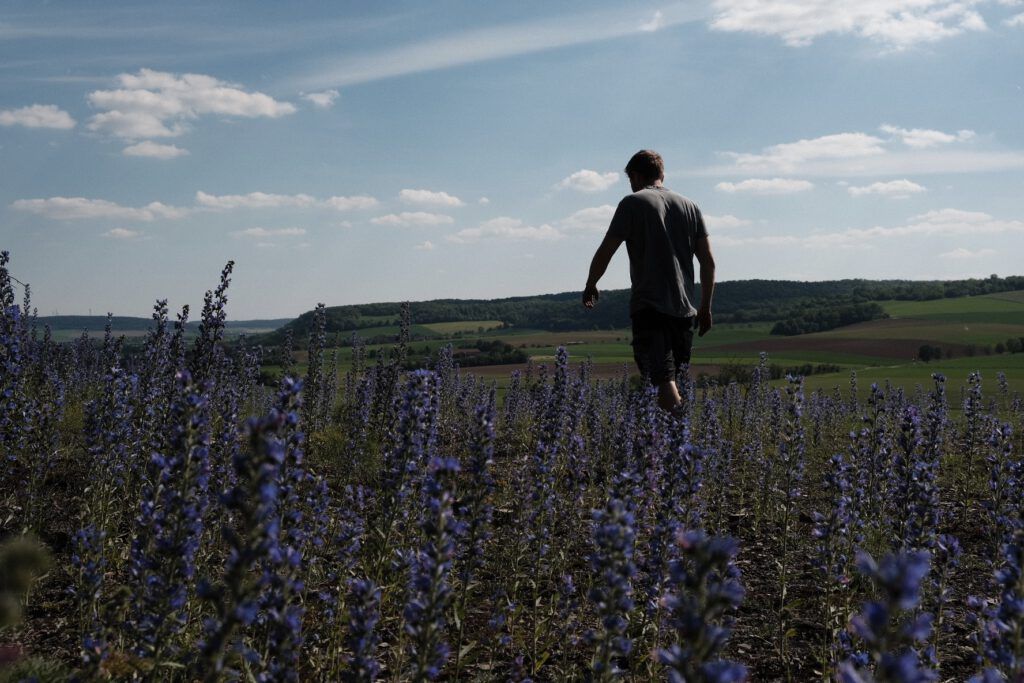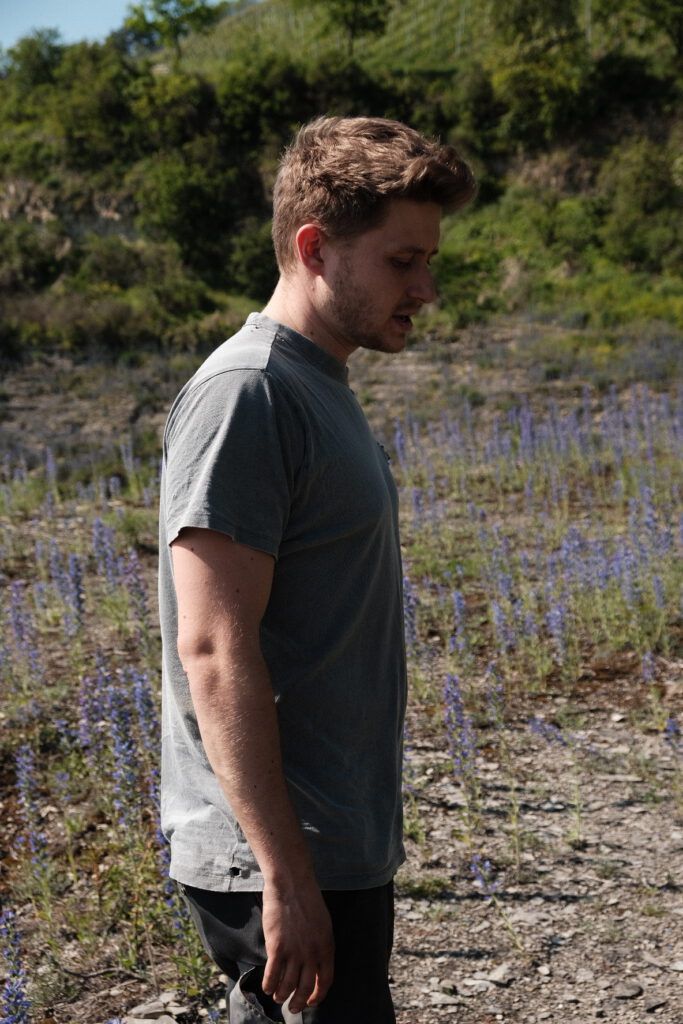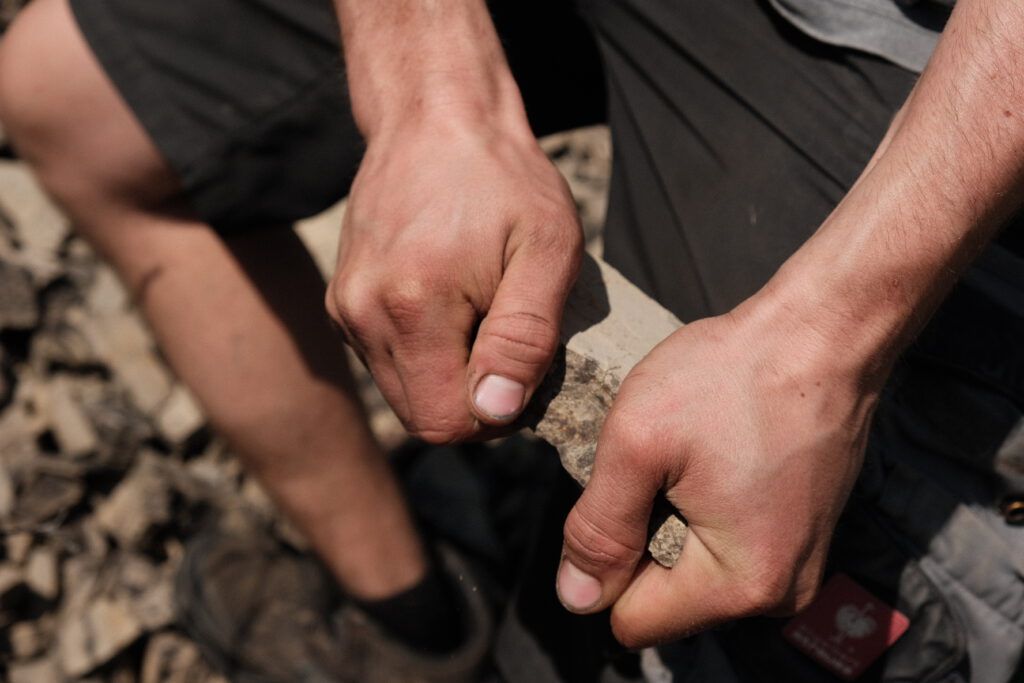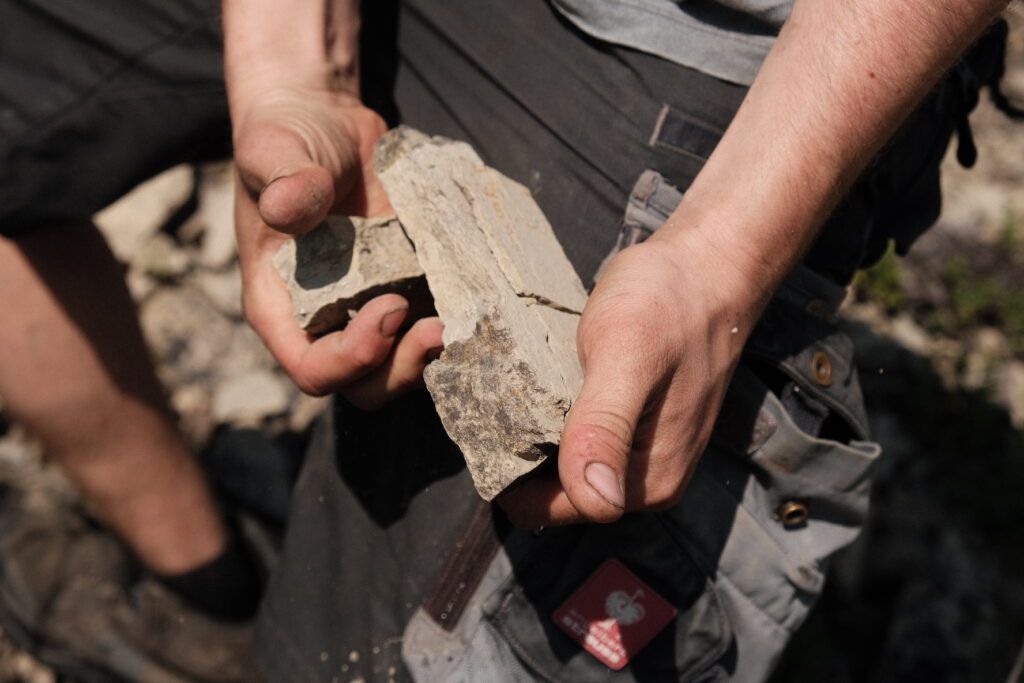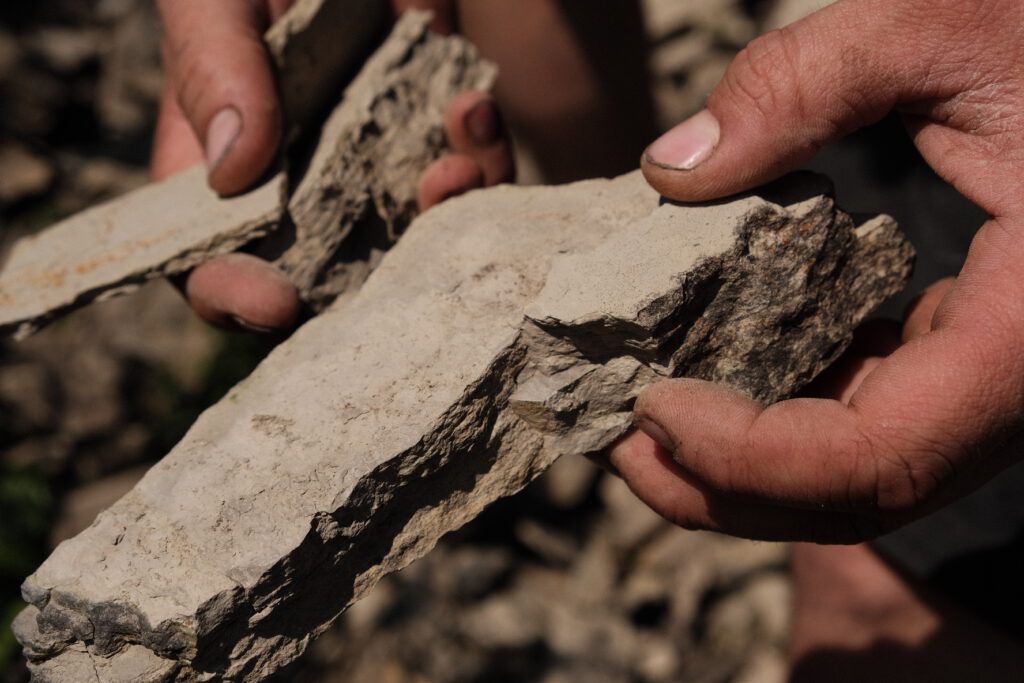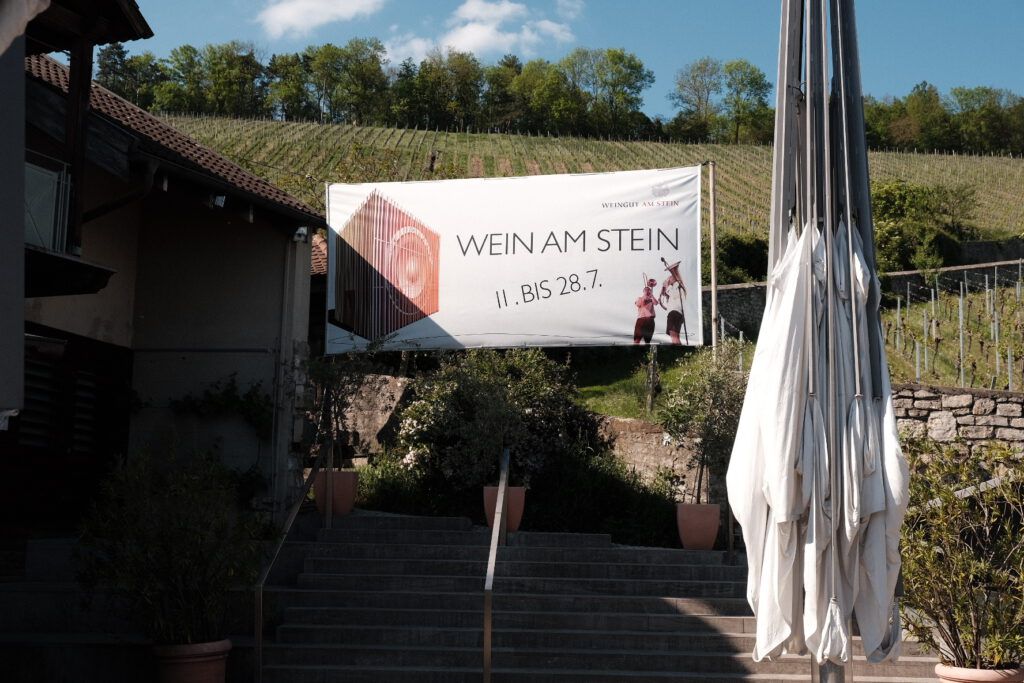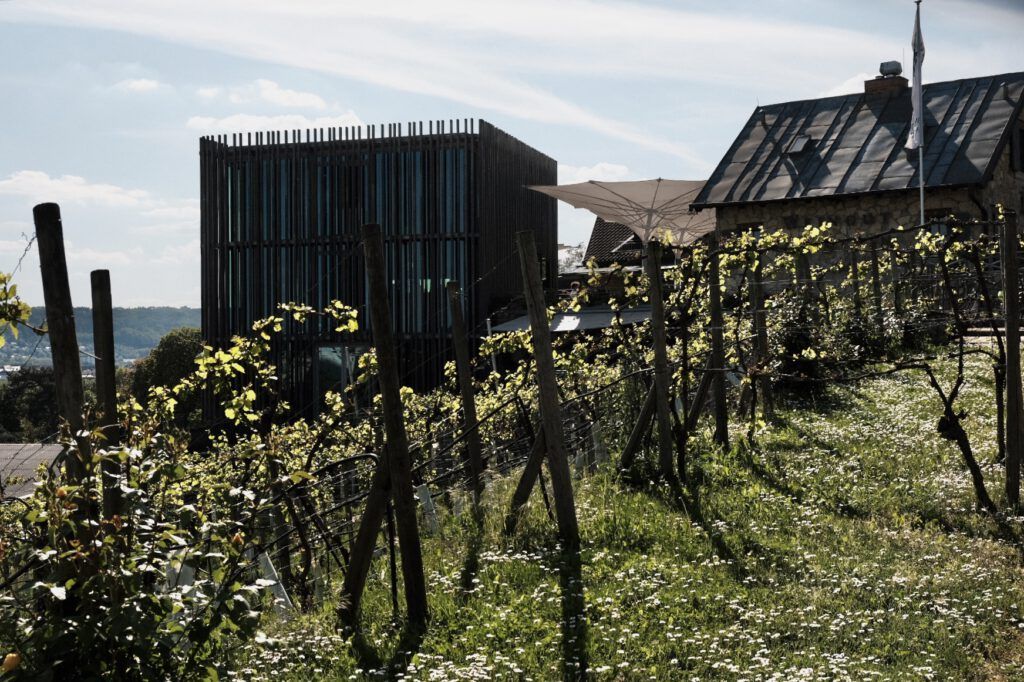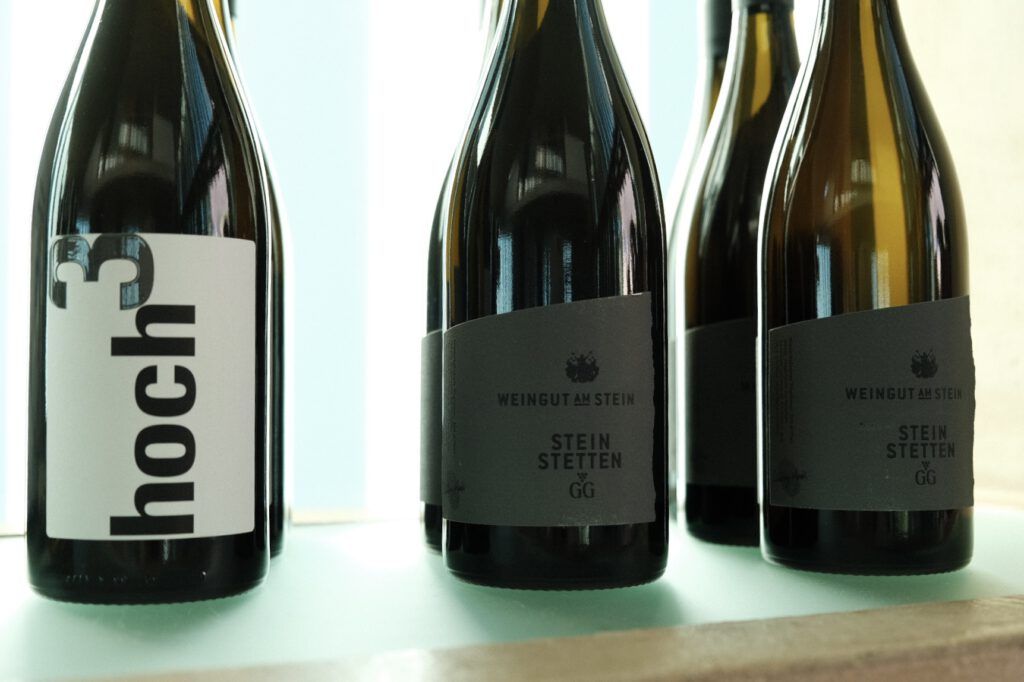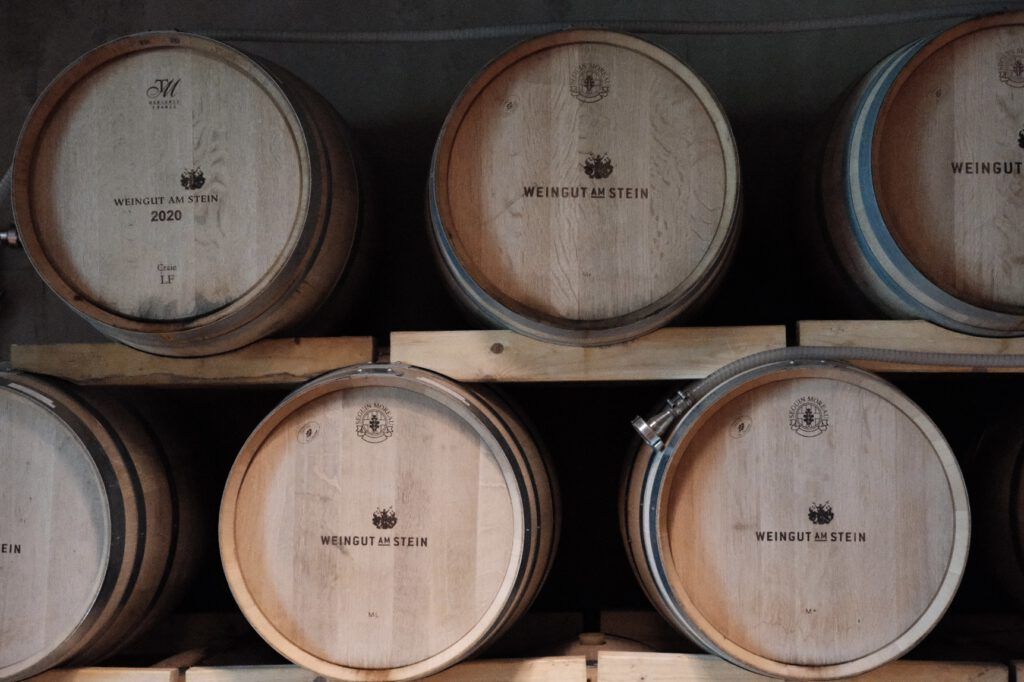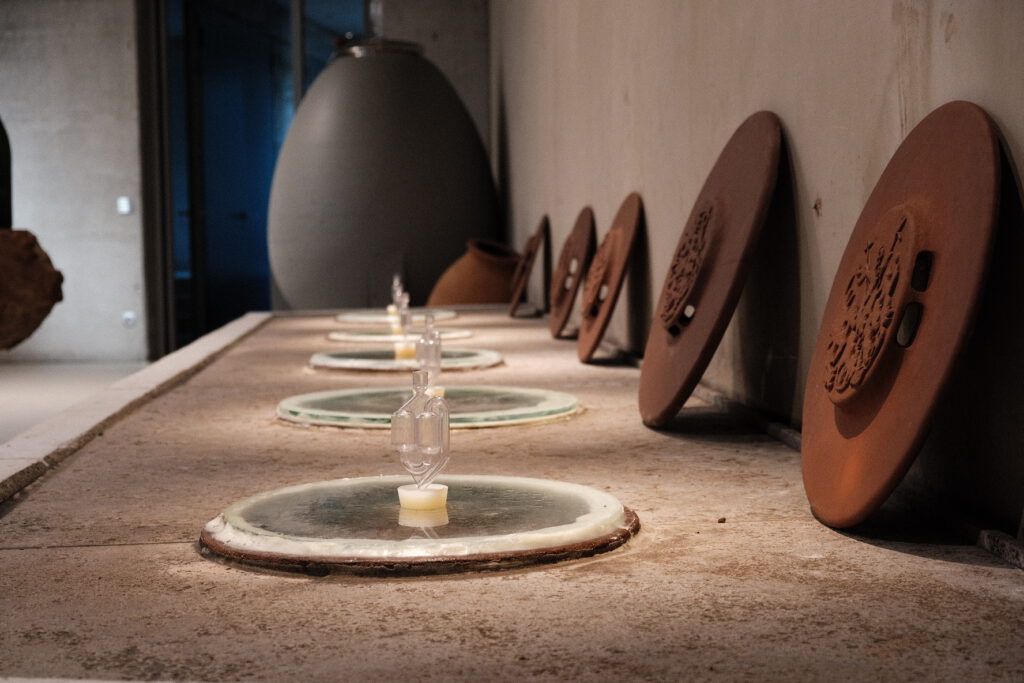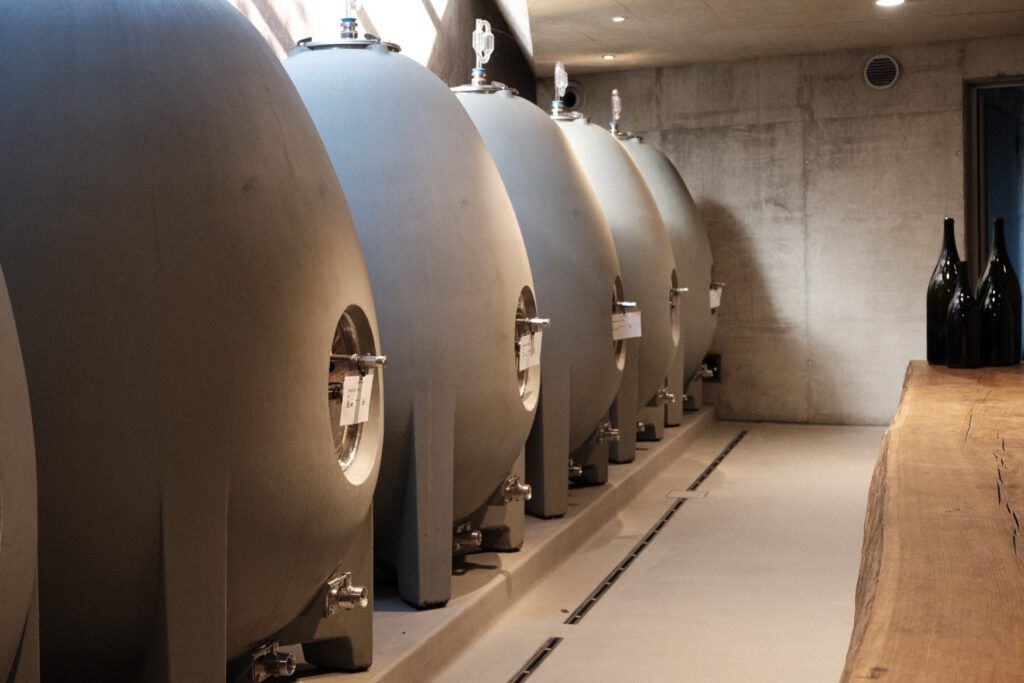Weingut am Stein: Pioneering Sustainable Viticulture
After exploring the vineyards, we return to the winery, which is picturesquely nestled in the “Würzburger Stein” site – not to be confused with the aforementioned Stettener Stein. The Weingut am Stein, run by Sandra and Ludwig Knoll, is a pioneer in sustainability. For over 30 years, the Knolls have been committed to organic, and now biodynamic, cultivation.
Here, in the cool cellar rooms below the winery, we taste some of the wines still maturing in tanks. Amphorae, concrete eggs, stainless steel tanks, and large and small, old and new wooden barrels – at Knolls, the cellar boasts a wide variety of aging methods. Marius hands me a glass of Silvaner, still young and unruly but already showing the fine minerality and clear expression of the Stettener Stein. „We give our wines up to two years to mature on the lees,” explains Marius. “This brings calm and composure to the wine.”
The Magic of Stein Wine
The passion and precision with which they work here are evident in every sip. The wines from Weingut am Stein are not just products; they embody a philosophy that sees winemaking as a holistic craft. “Our wines should bring joy and touch the heart, not just the mind,” says Marius with a smile. A pragmatic yet sensual thought. The wines from the Stettener Stein are certainly not cerebral.
As my visit comes to an end, we stand on the lower terrace of the winery, enjoying the warm afternoon sun. With a glass of Riesling in hand, I gaze over the winery’s garden. Starting in July, the now iconic “Wein am Stein” festival will take place here for almost three weeks. I think of the hard work that goes into every bottle of “Stein wine”. It is a moment of peace and enjoyment that puts the day’s exertions into the background.
